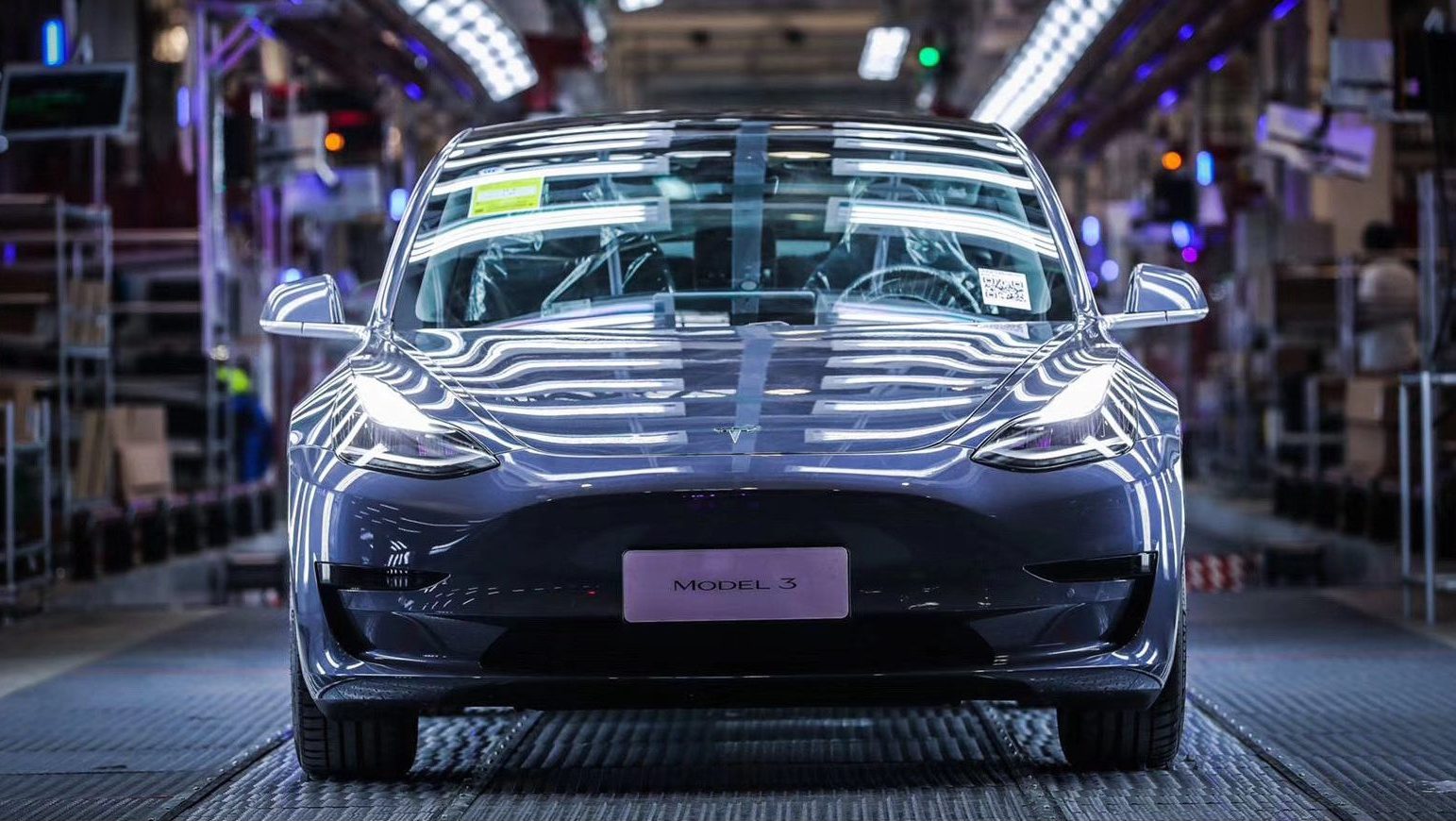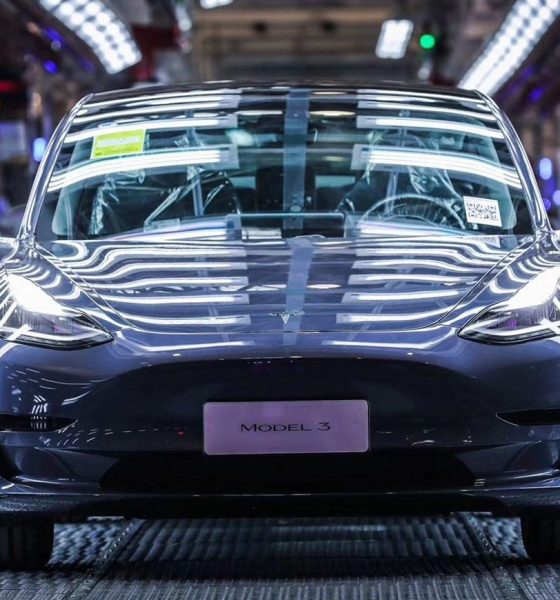

News
Tesla China gets golden opportunity to break new ground with Model 3 Long Range
Just recently, Tesla updated its Model 3 configurator in China to include the locally-produced Long Range RWD and Dual Motor Performance. With this, Tesla has begun an initiative to transition its entire Model 3 sales in China to vehicles that are produced locally. Such a strategy could pay off in spades for the electric car maker, especially considering an ongoing push from the Chinese government to boost the country’s automotive market.
China’s auto market has taken a beating this year, and the lockdowns due to the coronavirus outbreak did not help one bit. As noted by CNN Business in a recent report, China would have sold over 6 million cars by now on an average year, but so far, the country has only sold 3.7 million this 2020. This drop was highlighted by the China Association of Automobile Manufacturers (CAAM), which stated that Q1 auto sales have declined 42% year-over-year.
A huge culprit for this, of course, is the coronavirus outbreak. The country saw a massive 79% drop in February, primarily because of multiple cities going on mandatory lockdowns due to the pandemic. The decline in the local automotive sector was felt by China as a whole, as the industry plays a crucial role in the country’s economy. Over 40 million people rely on the car market for jobs, and the automotive segment generates about 10% of China’s manufacturing output.
Amidst these challenges, the CAAM emphasized in a statement on Friday that while automakers restart production, the industry’s “primary issue” and “urgent need” is to boost raw vehicle sales. The country aims to accomplish this in several ways. Beijing, for example, announced last month that it would extend subsidies and tax breaks for new energy vehicles. At least a dozen provinces have also ramped up their cash subsidies for auto purchases, with some offering as much as $1,400 per car.
If Tesla can take advantage of this momentum, the electric car maker’s China division would have the potential to significantly soften the blow that the company will be experiencing this year due to the coronavirus pandemic. Tesla’s American plants like the Fremont factory and Gigafactory New York have been temporarily shut down, after all, but Gigafactory Shanghai, which produces the Made-in-China Model 3, is already back to full operations. Even more impressive is the fact that Giga Shanghai is actually hitting new milestones, with the facility recently reaching a production rate of 3,000 vehicles per week.
China’s auto market is a highly competitive arena, and only carmakers that are aggressive enough thrive. Fortunately, Tesla China seems to be up to the task, pricing the new Model 3 Long Range RWD variant at about $48,000. The Model 3 Standard Range Plus has also made quite an impact since starting consumer deliveries earlier this year. Tesla China’s sales rose to 10,160 cars in March thanks to the locally-made Model 3 SR Plus, up from the 3,900 units that were sold in February.
While the year will be challenging for China’s auto market, it may be far too early to discount the country’s chances this year just yet. As noted by the China Passenger Car Association (CPCA), the need to drive children to and from school is a significant motivator for consumers to purchase cars. Fortunately, schools are expected to reopen in the country this spring and summer. Apart from this, CPCA Secretary General Cui Dongshu also mentioned that the country’s Labor Day holiday in May will last longer than it has been in over a decade. This presents an opportunity for more car sales, as potential buyers may have a desire to travel over the upcoming long holiday. Both of these opportunities are ripe for the picking for Tesla, provided that the electric car maker is up for the challenge.

News
Tesla FSD fleet is nearing 7 billion total miles, including 2.5 billion city miles
As can be seen on Tesla’s official FSD webpage, vehicles equipped with the system have now navigated over 6.99 billion miles.

Tesla’s Full Self-Driving (Supervised) fleet is closing in on almost 7 billion total miles driven, as per data posted by the company on its official FSD webpage.
These figures hint at the massive scale of data fueling Tesla’s rapid FSD improvements, which have been quite notable as of late.
FSD mileage milestones
As can be seen on Tesla’s official FSD webpage, vehicles equipped with the system have now navigated over 6.99 billion miles. Tesla owner and avid FSD tester Whole Mars Catalog also shared a screenshot indicating that from the nearly 7 billion miles traveled by the FSD fleet, more than 2.5 billion miles were driven inside cities.
City miles are particularly valuable for complex urban scenarios like unprotected turns, pedestrian interactions, and traffic lights. This is also the difference-maker for FSD, as only complex solutions, such as Waymo’s self-driving taxis, operate similarly on inner-city streets. And even then, incidents such as the San Francisco blackouts have proven challenging for sensor-rich vehicles like Waymos.
Tesla’s data edge
Tesla has a number of advantages in the autonomous vehicle sector, one of which is the size of its fleet and the number of vehicles training FSD on real-world roads. Tesla’s nearly 7 billion FSD miles then allow the company to roll out updates that make its vehicles behave like they are being driven by experienced drivers, even if they are operating on their own.
So notable are Tesla’s improvements to FSD that NVIDIA Director of Robotics Jim Fan, after experiencing FSD v14, noted that the system is the first AI that passes what he described as a “Physical Turing Test.”
“Despite knowing exactly how robot learning works, I still find it magical watching the steering wheel turn by itself. First it feels surreal, next it becomes routine. Then, like the smartphone, taking it away actively hurts. This is how humanity gets rewired and glued to god-like technologies,” Fan wrote in a post on X.
News
Tesla starts showing how FSD will change lives in Europe
Local officials tested the system on narrow country roads and were impressed by FSD’s smooth, human-like driving, with some calling the service a game-changer for everyday life in areas that are far from urban centers.

Tesla has launched Europe’s first public shuttle service using Full Self-Driving (Supervised) in the rural Eifelkreis Bitburg-Prüm region of Germany, demonstrating how the technology can restore independence and mobility for people who struggle with limited transport options.
Local officials tested the system on narrow country roads and were impressed by FSD’s smooth, human-like driving, with some calling the service a game-changer for everyday life in areas that are far from urban centers.
Officials see real impact on rural residents
Arzfeld Mayor Johannes Kuhl and District Administrator Andreas Kruppert personally tested the Tesla shuttle service. This allowed them to see just how well FSD navigated winding lanes and rural roads confidently. Kruppert said, “Autonomous driving sounds like science fiction to many, but we simply see here that it works totally well in rural regions too.” Kuhl, for his part, also noted that FSD “feels like a very experienced driver.”
The pilot complements the area’s “Citizen Bus” program, which provides on-demand rides for elderly residents who can no longer drive themselves. Tesla Europe shared a video of a demonstration of the service, highlighting how FSD gives people their freedom back, even in places where public transport is not as prevalent.
What the Ministry for Economic Affairs and Transport says
Rhineland-Palatinate’s Minister Daniela Schmitt supported the project, praising the collaboration that made this “first of its kind in Europe” possible. As per the ministry, the rural rollout for the service shows FSD’s potential beyond major cities, and it delivers tangible benefits like grocery runs, doctor visits, and social connections for isolated residents.
“Reliable and flexible mobility is especially vital in rural areas. With the launch of a shuttle service using self-driving vehicles (FSD supervised) by Tesla in the Eifelkreis Bitburg-Prüm, an innovative pilot project is now getting underway that complements local community bus services. It is the first project of its kind in Europe.
“The result is a real gain for rural mobility: greater accessibility, more flexibility and tangible benefits for everyday life. A strong signal for innovation, cooperation and future-oriented mobility beyond urban centers,” the ministry wrote in a LinkedIn post.
News
Tesla China quietly posts Robotaxi-related job listing
Tesla China is currently seeking a Low Voltage Electrical Engineer to work on circuit board design for the company’s autonomous vehicles.

Tesla has posted a new job listing in Shanghai explicitly tied to its Robotaxi program, fueling speculation that the company is preparing to launch its dedicated autonomous ride-hailing service in China.
As noted in the listing, Tesla China is currently seeking a Low Voltage Electrical Engineer to work on circuit board design for the company’s autonomous vehicles.
Robotaxi-specific role
The listing, which was shared on social media platform X by industry watcher @tslaming, suggested that Tesla China is looking to fill the role urgently. The job listing itself specifically mentions that the person hired for the role will be working on the Low Voltage Hardware team, which would design the circuit boards that would serve as the nervous system of the Robotaxi.
Key tasks for the role, as indicated in the job listing, include collaboration with PCB layout, firmware, mechanical, program management, and validation teams, among other responsibilities. The role is based in Shanghai.
China Robotaxi launch
China represents a massive potential market for robotaxis, with its dense urban centers and supportive policies in select cities. Tesla has limited permission to roll out FSD in the country, though despite this, its vehicles have been hailed as among the best in the market when it comes to autonomous features. So far, at least, it appears that China supports Tesla’s FSD and Robotaxi rollout.
This was hinted at in November, when Tesla brought the Cybercab to the 8th China International Import Expo (CIIE) in Shanghai, marking the first time that the autonomous two-seater was brought to the Asia-Pacific region. The vehicle, despite not having a release date in China, received a significant amount of interest among the event’s attendees.








